Evangelizing for Pulp Fiction

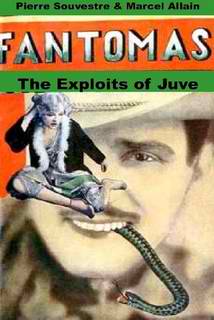 David Lee White is an accomplished contemporary playwright in the Tri-State area who is also a man with a fervent mission. Through his publishing imprint, Beltham House, he has brought a number of obscure works back into print after many decades. L. T. Meade and Robert Eustace’s The Sorceress of the Strand (1902) and The Brotherhood of the Seven Kings (1899), a pair of obscure yet influential mysteries involving Madame Blavatsky-like female criminal masterminds, are two prime examples. However, it is with Pierre Souvestre and Marcel Allain’s Fantomas crime series that White has truly made his greatest impact. It is unlikely that any American has done more for bringing Fantomas back in the public eye in the United States than Mr. White.
David Lee White is an accomplished contemporary playwright in the Tri-State area who is also a man with a fervent mission. Through his publishing imprint, Beltham House, he has brought a number of obscure works back into print after many decades. L. T. Meade and Robert Eustace’s The Sorceress of the Strand (1902) and The Brotherhood of the Seven Kings (1899), a pair of obscure yet influential mysteries involving Madame Blavatsky-like female criminal masterminds, are two prime examples. However, it is with Pierre Souvestre and Marcel Allain’s Fantomas crime series that White has truly made his greatest impact. It is unlikely that any American has done more for bringing Fantomas back in the public eye in the United States than Mr. White.
Beltham House has been responsible for reprinting six long out-of-print titles in the series for the first time in decades, only to have numerous copycat public domain publishers quickly throw together their own knockoff editions. Since Beltham House is published through Lulu Press and not all of their titles are readily available on Amazon.com, it is likely that most of the specialized audience for the series is not even aware that Beltham House is the one-man operation that rediscovered these lost classics of the thriller genre. White also adapted a long-lost 1920 Fantomas serial as a novelization for Black Coat Press a few years back entitled, Fantomas in America. The book was the first new Fantomas novel in nearly fifty years and its historical significance was even greater for preserving a story that was otherwise lost to the ravages of time as no extant print of the serial has yet been recovered.
So it was that I approached Beltham House’s contribution to Fantomas’s centennial last year with a degree of skepticism. I already owned the nine original books that were back in print and White’s novelization of the serial, so why would I shell out the extra money for The Collected Fantomas, an omnibus edition collecting the first seven books in the series? If I already owned the books, the omnibus could not possibly be of interest to me, right? Wrong.
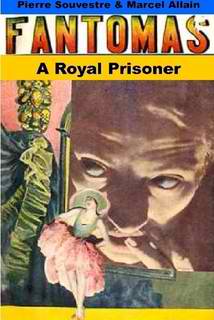
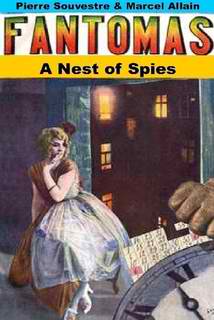 This gorgeous phone book-sized volume is chock full of literally hundreds of vintage illustrations and photos from Fantomas’s many appearances in magazines, books, and serials. Even setting the text in folio (two columns of text per page), you’re still looking at nearly 700 pages of Fantomas. The text is easy to read and unlike very nearly every other Fantomas book available, it has been carefully proofed to remove all typos and OCR errors. This is the volume every Fantomas collector needs, even if you already own most or all of the books contained within. White’s introduction is informative and entertaining and reading the books in sequence with the original jackets and interior art reproduced alongside vintage photos from the film adaptations placed in their proper chronological sequence enhances the experience. This is the way to produce an omnibus edition for a cult series. It is absolutely criminal this book is not available on Amazon.com at present to reach a wider audience. White’s labor of love is deserving of greater recognition and accolades for his going above and beyond to produce the one essential Fantomas volume that is a must for pulp fiction aficionados.
This gorgeous phone book-sized volume is chock full of literally hundreds of vintage illustrations and photos from Fantomas’s many appearances in magazines, books, and serials. Even setting the text in folio (two columns of text per page), you’re still looking at nearly 700 pages of Fantomas. The text is easy to read and unlike very nearly every other Fantomas book available, it has been carefully proofed to remove all typos and OCR errors. This is the volume every Fantomas collector needs, even if you already own most or all of the books contained within. White’s introduction is informative and entertaining and reading the books in sequence with the original jackets and interior art reproduced alongside vintage photos from the film adaptations placed in their proper chronological sequence enhances the experience. This is the way to produce an omnibus edition for a cult series. It is absolutely criminal this book is not available on Amazon.com at present to reach a wider audience. White’s labor of love is deserving of greater recognition and accolades for his going above and beyond to produce the one essential Fantomas volume that is a must for pulp fiction aficionados.
For the uninitiated, the question of who is Fantomas is an excellent starting point. The answer from the faithful is, of course, Fantomas could be anyone. He is a criminal genius who embodied the spirit of anarchy in France a century ago. The mania for the character served as the springboard for an entire movement among the absurdist school of art and the books crossed class lines to appeal equally to every aspect of French society. Why was the character so successful, spawning nearly three dozen books and countless film and comic book adaptations? The simple answer is that Fantomas was a true original. The character combined the stylings of lurid thrillers with a uniquely sardonic humor. Authors Pierre Souvestre and Marcel Allain’s narrative integrity could never be trusted by the reader. Laugh out loud funny one moment and sickly disturbing the next, the books were highly stylized and made for fascinating reading at every twist and turn.
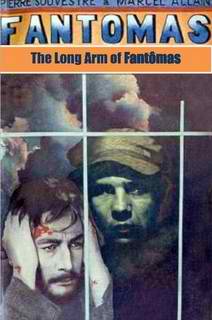
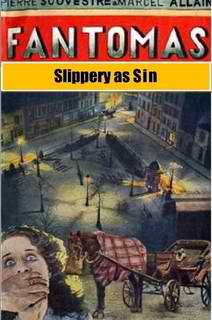 Alan Moore’s V for Vendetta is the closest modern equivalent or possibly Terry Gilliam’s classic Brazil (1985) for a Pythonesque take on Edwardian pulp fiction mixing the baroque with the grotesque is perhaps the best summation possible. Who else but Fantomas would release plague rats on a sinking ship just to observe the crew and passengers dying? Who else but Souvestre and Allain would dare to implicate Fantomas in the sinking of the Titanic when the tragedy was still fresh in the public mind? All the rules were thrown out by Souvestre & Allain as old women and babies fall victim to Fantomas’s sadistic reign of terror in gleeful defiance of the rules of what an author should and shouldn’t do to preserve reader empathy. Fantomas is a master of disguise and possessed of a genius intellect. His lack of motive and the fear that he really could be anyone is what gives the character his power and makes him so fearful at the same time. It is easy to lose one’s way as you watch fearless Inspector Juve and his intrepid reporter sidekick Fandor seek in vain to bring the archfiend to justice. There can be no explanations or true endings where Fantomas is concerned.
Alan Moore’s V for Vendetta is the closest modern equivalent or possibly Terry Gilliam’s classic Brazil (1985) for a Pythonesque take on Edwardian pulp fiction mixing the baroque with the grotesque is perhaps the best summation possible. Who else but Fantomas would release plague rats on a sinking ship just to observe the crew and passengers dying? Who else but Souvestre and Allain would dare to implicate Fantomas in the sinking of the Titanic when the tragedy was still fresh in the public mind? All the rules were thrown out by Souvestre & Allain as old women and babies fall victim to Fantomas’s sadistic reign of terror in gleeful defiance of the rules of what an author should and shouldn’t do to preserve reader empathy. Fantomas is a master of disguise and possessed of a genius intellect. His lack of motive and the fear that he really could be anyone is what gives the character his power and makes him so fearful at the same time. It is easy to lose one’s way as you watch fearless Inspector Juve and his intrepid reporter sidekick Fandor seek in vain to bring the archfiend to justice. There can be no explanations or true endings where Fantomas is concerned.
I beseech anyone who has not already done so to pay a visit to Lulu.com and choose either the mammoth trade paperback or hardcover doorstop edition of The Collected Fantomas. David Lee White has produced a work of stunning beauty and peerless historical significance. If you have not yet experienced the addictive delirium of Fantomas at his best, starting with these first seven books in the series, it is the best decision you could ever make. I hope at least a few of you opt to do so. I can think of no better treat this Halloween season. Besides, you never know when the fearless, relentless genius of crime will return or worse still, when you will discover he has always been among you, unrecognized behind one of his many impenetrable disguises. There is no security when Fantomas is near at hand and anyone might be Fantomas, even the reader themselves!
William Patrick Maynard was authorized to continue Sax Rohmer’s Fu Manchu thrillers beginning with The Terror of Fu Manchu (2009; Black Coat Press). A sequel, The Destiny of Fu Manchu was published earlier this year by Black Coat Press. Next up is a collection of short stories featuring an Edwardian detective, The Occult Case Book of Shankar Hardwicke and a hardboiled detective novel, Lawhead. To see additional articles by William, visit his blog at SetiSays.blogspot.com